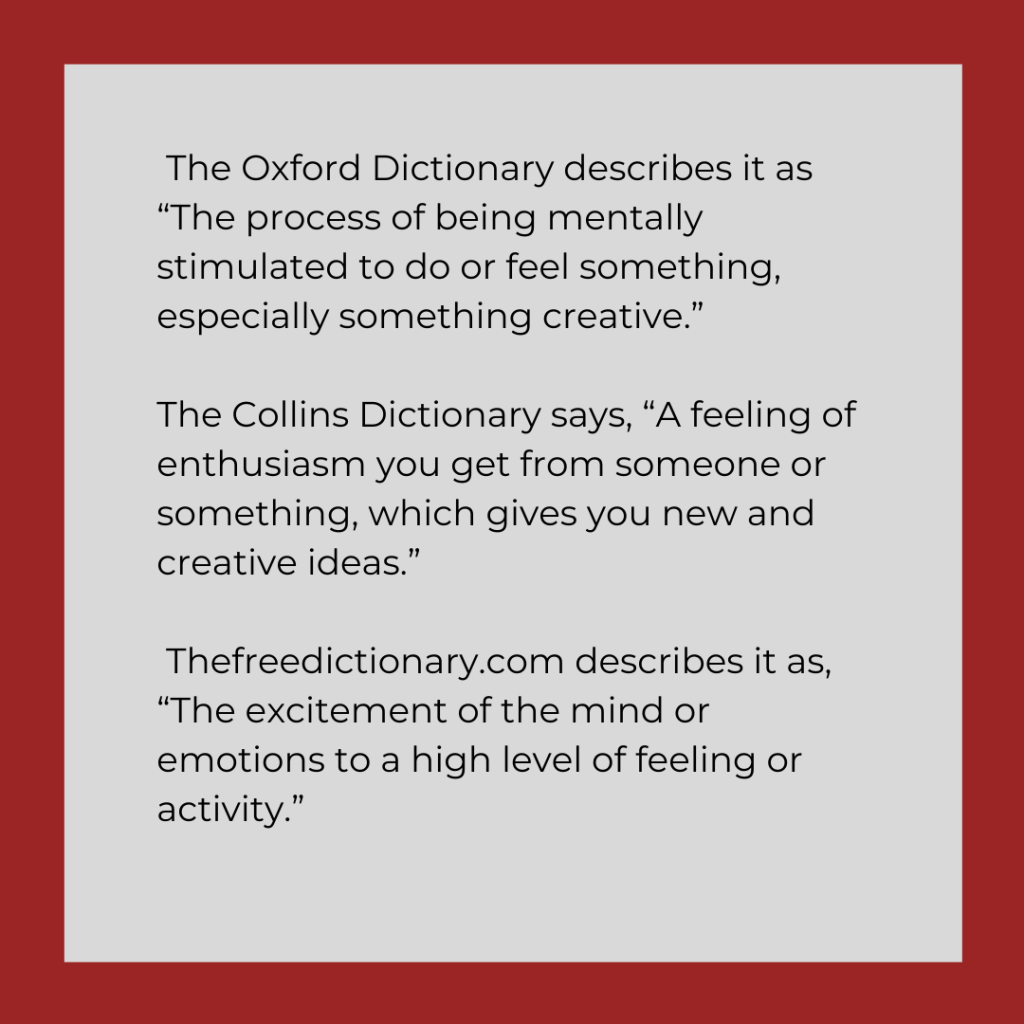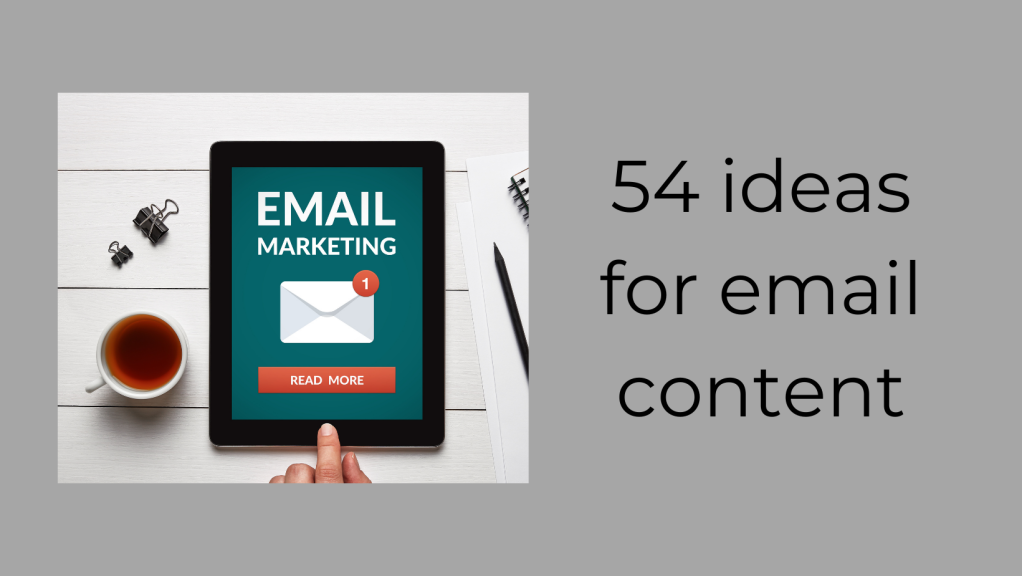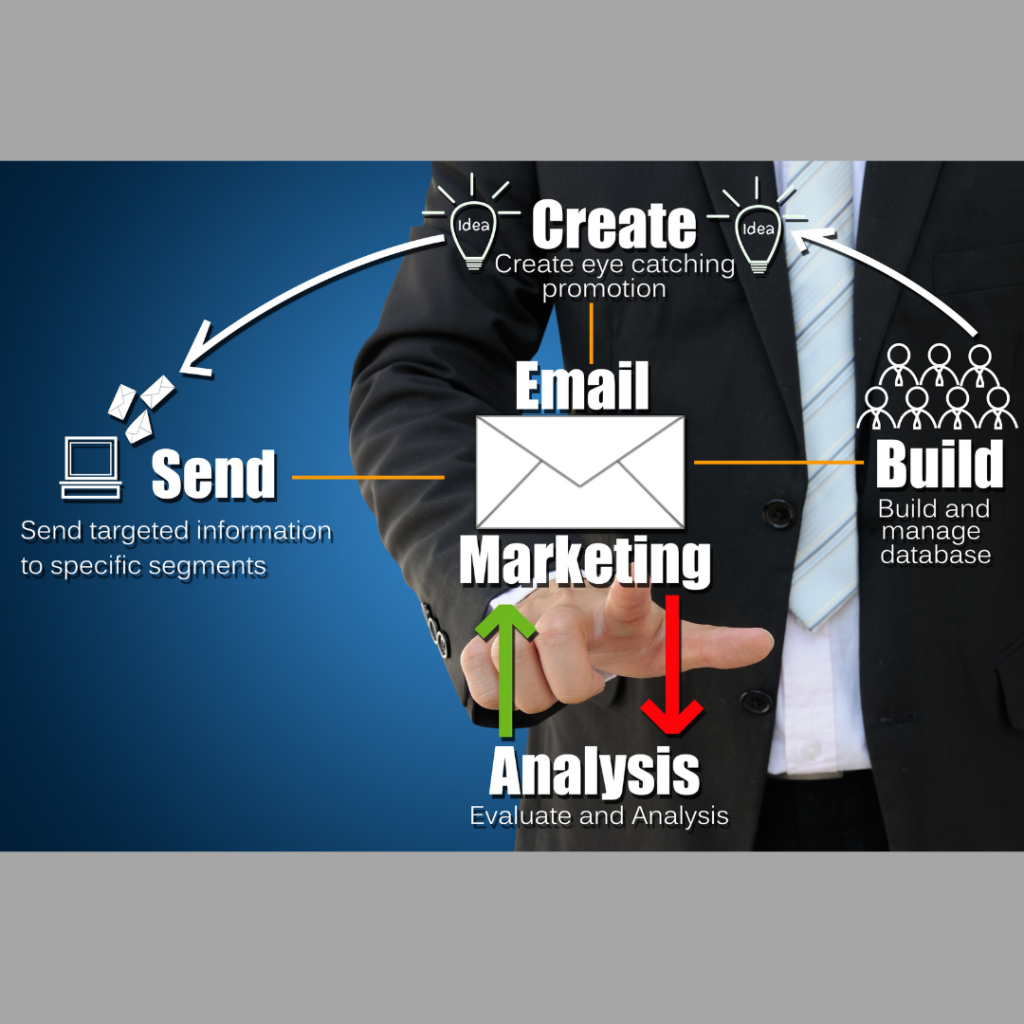Email marketing is a fabulous way for your customers or potential customers to find out more about you and your business…the brand, products, or services they care about. The great thing about email is that people have to opt-in to receive your emails in their inbox, so they are choosing to have communication from you on a regular basis.
So, let’s start with a few facts…
- In 2025, the number of email users is expected to reach 4.6 billion (Techjury)
- 37% of individuals have two email accounts (Statistica)
- 63% of people who open up an email try and find a discount (LXA)
- 99% of email users check their inbox every single day (Hubspot)
- 60% of consumers reported that they have made a purchase as a result of a promotional email (OptinMonster)
- Automated emails can generate 320% more revenue than emails that are not automated (Campaign Monitor)
- Mobile devices account for nearly 60% of all email opens (Luisa Zhou)
Also, according to The Radicati Group, “Email remains the most pervasive form of communication, while other technologies such as social networking, instant messaging, chat, mobile instant messaging are also taking hold, email is still the more ubiquitous form of business communication. In addition, email is integral to the overall Internet experience as an email account is required to sign up to any online activity, including social networking sites…”
How do I produce new ideas every month?
This is the big question that I’ve been asked several times, so after a bit of research and hard thinking, I’ve produced a list that I think will help you tailor your email to your audience, to keep them engaged and to keep them coming back for more, month on month.
But, before I give you the ideas, think about these three questions first. You shouldn’t just throw any old content out there – it must fit your brand and your target audience.
- Will your email hit the spot with your target audience?
You know your customers, so you need to make sure that any content you publish is right for them and will add value to them and their lives. - What are your goals for your email?
You need to know why you’re setting up an email list. It could simply be that you want to have more engagement with your business or to help you increase sales. Once you know what your goal is, think about how you want your audience to respond. It’s important to pick content ideas that will help you achieve your goals. - Does your content fit with your brand?
In the same way that you pick the content to target your audience and help you achieve your goals, you also need it to fit with your brand. Does the content align with the core values of your business?
I always bang on about the 80/20 rule when I talk about content for social media posts. That is, all content should consist of 80% engaging, entertaining, educating and inspiring your target audience, and only 20% sales.
The same applies to content for your email marketing. So, with this in mind, I’ve created a list for you, under those separate headings.
What content can I put out there?
Engaging ideas
This is where you can share things that help your audience to get to know you and your brand. Be authentic and show your personality. This helps your audience relate to you, feel cared about and valued, and to find out what your brand stands for.
- Share things that you love – this could be images, music, articles, or stories that you come across.
- Introduce yourself and tell your audience about your business. What is your ‘why?’ Why did you start your business and why do you do what you do?
- What inspires you? This could be individual inspiration for particular products or services that you offer.
- Show behind the scenes videos or photos of your business. You could video you making a product, packing an order to a customer, or unpacking an order and showing each individual item to camera.
- Share a ‘day in the life’ and take your audience through a typical day for you.
- Tell your story and share a list of things you wish you’d known before starting your business.
- Share something that didn’t work for you, (we’re all human), and how you rectified it. Or share an obstacle you’ve come across and how you resolved it.
- Write about your children or your pets and how they make you happy or mad (!) and tell a funny story about them.
- Share a charity you support and why it’s so important to you.
- Share your most popular posts from social media.
- Talk about any courses you’ve done or any certification you have. You might have done something to upskill – share it!
- Ask your audience questions – if you’re thinking of a new product or service, ask their opinion.
Entertainment ideas
These things help show your fun side. Make your audience laugh, think, or test them in some way. Content that you share to entertain doesn’t have to link directly to your business or your products/services. It’s about showing the authentic you. Although it doesn’t have to link to your products/services, it is important that it will appeal to your target audience.
- Holidays, such as Valentine’s Day, Easter, Christmas. Share funny stories or facts.
- Memes and jokes – share something that makes you laugh – just be aware of things that could offend your audience.
- Contests – share a contest through your email list, set out what it is and what they must do – and tell them the winner will be announced in your next email. This will ensure they open and read the next email you send!
- Quizzes – set up a quiz with a set of questions and offer a small prize for the winner…to be drawn at random. You can publish the results in your next email.
- Share a case study of one of your products from the perspective of a customer. Ask a customer if you can interview them and feature them in your email as a case study.
- Host a poll – ask a question and have multi-choice answers.
- Share the link to an article or post you’ve read that you have found interesting/entertaining.
Educating ideas
There will always be something that you can teach your audience. Whether you’ve been in business for years, or just a few months, you will know how to do something that others don’t. Your business will be unique, even if you do a similar thing to other businesses, because you are unique and have your own set of values, interests, and ways of doing things!
- Provide hints and tips to help your audience
- Create a video showing your audience how to do something
- Create a series of videos or photo shots, showing the creation of a product or service, from start to finish, with an explanation for each stage.
- Give tips on what NOT to do, related to your business.
- Create a template or checklist that your readers can download for free.
- Create a beginner’s guide to something you know all about. It can be in PDF format and doesn’t have to be a book!
- Share an infographic.
- Share trends in your industry or interesting articles about your niche.
- If you see a new legal thing that impacts your type of business, share it for others to see.
- Share any blog posts you’ve written that month, or any articles that your business is featured in.
- Share facts.
- Share an actionable idea that will make your audience’s life easier.
- Tell your audience how your products or services can make their lives better – what problems do you solve for them?
- Share a book you’ve read and why you like it, especially if it’s something that teaches your audience how to do something.
Inspirational ideas
There are lots of different definitions of inspiration and what that means. Here’s just a few from some of the bigger dictionaries.

Another way to describe inspirational content is motivational. This is the way I tend to thing of it. If something motivates me, it inspires me to do something different or something new – or just makes me think!
So, with all of these in mind (wow!), here are a few ideas:
- Share inspirational or motivational quotes.
- Share a case study that you feel is inspirational.
- Do you have testimonials about your products or services? Share them!
- Tell a story about how you overcame something. It could be an illness, a sports injury (and your journey back to health), an obstacle in your business or something from your childhood.
- Show what inspires you. It could be a photo of your favourite place…it could be something or somewhere that makes you feel safe.
- Talk about the things that help you stay inspired and why. It could be that you do daily meditation or yoga. You might enjoy getting out in the fresh air and hiking or the kind of exercise you’re into.
- Talk about your hobbies – for example, if you love taking photos, share the ones that inspire you and say why. Share your passion with your audience.
- Share your bucket list – you could have serious or silly aspirations on your bucket list!
Sales ideas
Finally, you can talk about your products or services from a sales perspective.
- Share an offer or discount
- Talk about new products and how/why you created them.
- Link to your website, price list, online shop, or blog.
- Give the link to your subscription page and ask them to share it with their friends and family – or anyone they think would be interested in your products or services.
- Give an incentive to buy your products – do you have a loyalty card like they give in coffee shops? E.G. Buy 10 coffees, get one free.
- Give a freebie as part of a competition – or just give a freebie because your readers are loyal customers/followers.
- Focus on one product and tell your readers all about it. What are it’s features and more importantly, what are its benefits? How will your product make their lives better or easier?
- Share images of your products, maybe share a best seller, with price.
- Create a video of some of your best-selling products and share it in your newsletter.
- Share any media coverage or articles written about your business.
- If you attend an event, write about it and how well your products sold.
- If you have a stall at a local market, share photos and experiences.
- Ask customers to send you photos or short videos holding or using your products.
I really hope that this blog post has helped you think of new and innovative ways to get content into your email. Thank you for reading and I hope you are inspired to get started with email or give yours a good re-vamp.
Sign up to my email newsletter to get valuable marketing help and tips – and you’ll also receive 102 ideas for social media posts, as well as access to a ‘members only’ area on my website full of free resources.















